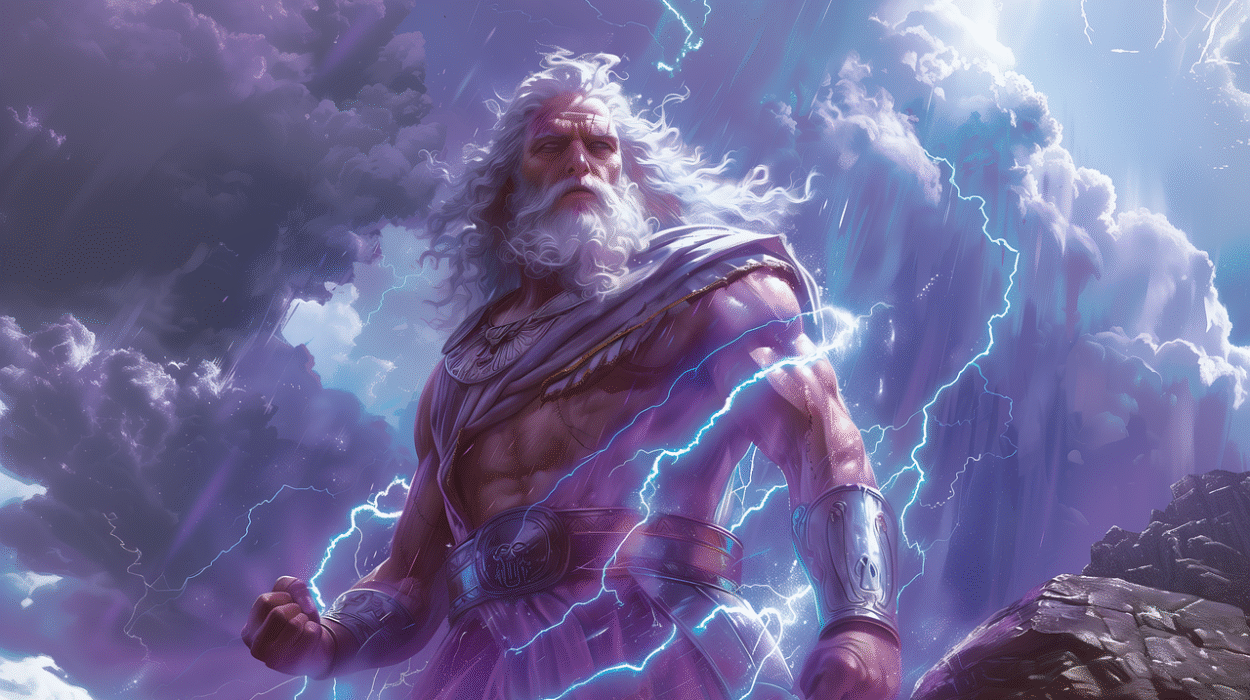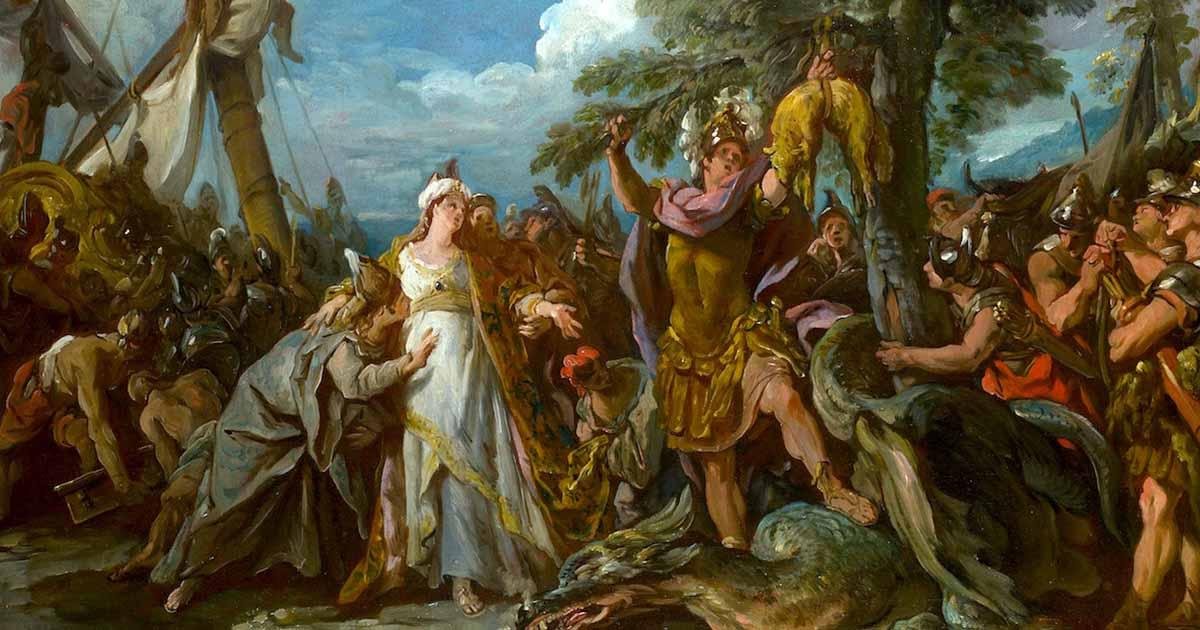For thousands of years, one name has echoed across cultures, empires, and generations—Hercules. In the ancient world of Greece, he was known as Heracles, a demigod of thunderous strength, fierce determination, and tragic humanity. In Rome, he became Hercules, a figure whose story stretched beyond myth into legend, into art, and into the very identity of civilization.
The story of Hercules is more than a tale of a strongman who wrestled beasts and performed impossible feats. It is a story of struggle, resilience, redemption, and the eternal human yearning for greatness. He is not only a figure of divine might but also of mortal suffering, torn between godhood and humanity. To understand Hercules is to explore not just a hero of myth but an archetype of endurance that has inspired poets, playwrights, philosophers, and ordinary people for millennia.
Birth of a Demigod
Hercules was born from the union of Zeus, the king of the gods, and Alcmene, a mortal woman of extraordinary beauty and virtue. Like many of Zeus’s affairs, this was marked by deception. Zeus disguised himself as Alcmene’s husband, Amphitryon, and from this union, Heracles was conceived.
But his birth was not welcomed by all. Hera, Zeus’s wife, burned with jealousy at yet another reminder of her husband’s unfaithfulness. From the moment Heracles was born, Hera sought to destroy him. The myths tell us that even in infancy, when Hera sent two serpents to kill him in his cradle, Heracles displayed his divine strength by strangling them with his tiny hands.
Thus began a life marked by both divine favor and divine persecution. Loved by Zeus but hated by Hera, Heracles was destined for greatness but also for immense suffering.
The Nature of Hercules
What made Hercules unique among Greek heroes was not only his raw strength but his deeply human qualities. He was not a flawless god but a demigod riddled with contradictions. He was quick-tempered yet compassionate, impulsive yet noble, capable of both horrific mistakes and heroic redemption.
This complexity is why Hercules stands apart. He is not a distant figure of perfection but a hero whose flaws make him relatable. His strength was unmatched, yet his greatest battles were often against his own anger, guilt, and fate. The Greeks adored him not only for his power but for his humanity. He was proof that greatness comes not from being without flaws but from overcoming them.
Madness and the Turning Point
Hercules’ life took a tragic turn when Hera struck him with madness. In his delirium, he committed the most terrible of deeds: he killed his own wife, Megara, and their children. When his sanity returned, he was consumed by grief and despair.
Seeking redemption, Hercules turned to the Oracle of Delphi, who told him he must serve King Eurystheus and complete a series of nearly impossible tasks. These became known as the Twelve Labors of Hercules, legendary challenges that tested not only his strength but also his endurance, wit, and resilience.
These labors would define him for eternity.
The Twelve Labors: A Journey of Redemption
The labors of Hercules were not merely feats of strength; they were a spiritual journey, a means of cleansing guilt and earning immortality. Each labor tested different aspects of his character and forced him to face monsters, dangers, and even the will of the gods themselves.
The Nemean Lion
The first labor brought Hercules to face the Nemean Lion, a beast with impenetrable skin. No weapon could pierce its hide. Hercules, embodying raw strength, wrestled the lion with his bare hands and strangled it to death. He then skinned the lion using its own claws, wearing its pelt as armor—an enduring symbol of his power.
The Lernaean Hydra
Next came the Hydra, a serpent with multiple heads, each of which regenerated when cut. With the help of his nephew Iolaus, Hercules burned the stumps after each decapitation, preventing regrowth. He buried the immortal head under a massive rock. This labor symbolized the battle against problems that multiply when attacked—showing Hercules’ intelligence as much as his strength.
The Ceryneian Hind
This golden-horned deer was sacred to Artemis, the goddess of the hunt. Hercules pursued it for a year before capturing it without harming it, proving that even his brute force could bend to patience and respect for the gods.
The Erymanthian Boar
Hercules subdued this monstrous boar by chasing it into the snow and trapping it alive. He carried it on his shoulders back to Eurystheus, who was so terrified he hid in a jar.
The Augean Stables
King Augeas owned vast stables filled with thousands of cattle that had not been cleaned in years. Hercules accomplished the impossible task by rerouting two rivers to wash away the filth in a single day. This was not just strength—it was ingenuity.
The Stymphalian Birds
Armed with a rattle given by Athena, Hercules drove away a flock of man-eating birds with bronze beaks. His arrows struck down many, showing his skill as an archer.
The Cretan Bull
This fierce bull was terrorizing Crete. Hercules wrestled it into submission and brought it back alive. It was later released, becoming part of the myth of the Minotaur.
The Mares of Diomedes
These horses were fed human flesh by their master, King Diomedes. Hercules tamed them by feeding Diomedes himself to the mares, turning their savagery back upon their master.
The Belt of Hippolyta
Hercules was sent to obtain the girdle of the Amazon queen, Hippolyta. Though she initially offered it willingly, Hera interfered, spreading rumors of treachery. A battle broke out, and Hercules killed Hippolyta, seizing the belt by force.
The Cattle of Geryon
This labor took Hercules to the far west, where he battled the giant Geryon, who had three bodies. With his arrows, Hercules slew Geryon and drove the cattle back to Greece, crossing dangerous lands.
The Apples of the Hesperides
These golden apples were guarded by the Hesperides and the serpent Ladon. Hercules tricked Atlas, the Titan who held up the sky, into retrieving them, then cleverly escaped carrying the heavens himself.
The Capture of Cerberus
Finally, Hercules descended into the underworld to capture Cerberus, the three-headed hound of Hades. With his unmatched courage, he wrestled the beast into submission and brought it to the mortal world, proving his strength reached even beyond death.
These labors were more than heroic deeds. They were a pathway to redemption, a testament to human endurance, and a metaphor for overcoming one’s inner demons.
Beyond the Labors
Though the Twelve Labors are the most famous, Hercules’ life did not end there. He went on to participate in other adventures: joining the Argonauts, freeing Prometheus from his chains, and engaging in countless battles. He was a hero in every sense, but his life remained turbulent, marked by violence, passion, and tragedy.
One of his most famous later trials was his love for Deianira. Through jealousy, deception, and a poisoned garment given to her by the dying centaur Nessus, Hercules was struck with unbearable agony. In pain, he built his own funeral pyre and lay upon it. But his story did not end with death.
Hercules Ascends to Godhood
As the flames consumed his mortal body, Zeus intervened. The suffering Hercules was taken to Olympus, where he was granted immortality. He was reconciled with Hera and became a full god, worshiped alongside the immortals.
This apotheosis—his transformation from mortal to god—was the final redemption. Hercules’ journey, filled with suffering, guilt, and trials, culminated in eternal honor. He was proof that even a flawed and tormented hero could achieve greatness and immortality.
Hercules in Ancient Greece
In ancient Greece, Hercules was more than a myth. He was a cultural icon. Statues, temples, and festivals celebrated him as a protector, a savior, and a model of heroic endurance. He was invoked by athletes, warriors, and rulers who sought his strength and courage.
For the Greeks, Hercules embodied the balance between divine power and human struggle. He was not perfect, but his perseverance made him worthy of worship. His myths were told to inspire courage, humility, and the belief that even suffering could lead to greatness.
Hercules in Rome and Beyond
When the Romans adopted Greek mythology, they transformed Heracles into Hercules. To the Romans, he became a symbol of strength, discipline, and imperial power. His image adorned coins, temples, and public monuments.
Hercules’ influence did not stop in antiquity. In the Renaissance, artists like Rubens and Michelangelo immortalized him in paintings and sculptures. In modern times, Hercules became a staple of literature, opera, and film. From Disney’s animated version to epic Hollywood retellings, his legend remains vibrant and alive.
The Symbolism of Hercules
Hercules’ story is more than myth—it is allegory. His labors represent the struggles of human life: challenges that seem insurmountable, mistakes that demand redemption, and the resilience needed to endure suffering. His strength is not merely physical but spiritual, showing that the true measure of a hero lies in persistence and moral courage.
For philosophers, Hercules symbolized the triumph of virtue over vice. For ordinary people, he represented the belief that no matter how heavy the burden, it can be endured and overcome. His life was a tapestry of tragedy and triumph—a reflection of humanity itself.
The Legacy of Hercules
Hercules’ legacy is eternal. He remains one of the most beloved figures of classical mythology, a hero whose story has been retold countless times across cultures and eras. He bridges the gap between mortal and divine, between strength and suffering, between myth and philosophy.
We remember Hercules not because he was flawless, but because he was flawed. Not because he never fell, but because he always rose again. His story endures because it is, in essence, the story of humanity—the struggle for meaning, redemption, and transcendence.
Conclusion: The Hero Within Us
Hercules is not only a figure of ancient Greece. He is within us all. His strength, his labors, his suffering, and his redemption echo the human condition. We all face our own lions, our own hydras, our own impossible tasks. And like Hercules, we stumble, we suffer, we endure.
In the end, Hercules shows us that greatness is not the absence of weakness but the courage to overcome it. His story is a beacon of resilience, a reminder that through struggle comes growth, and through endurance comes immortality—not always in the realm of the gods, but in the hearts of those who remember and are inspired.
Hercules, the legendary strongman of Greece, is not just a hero of the past—he is a hero for all time.






